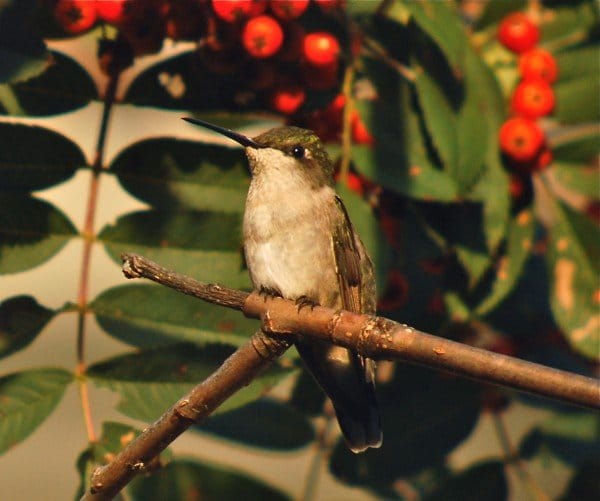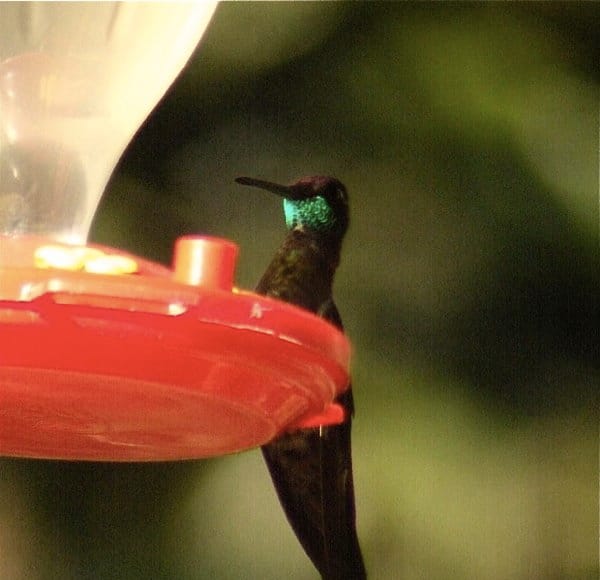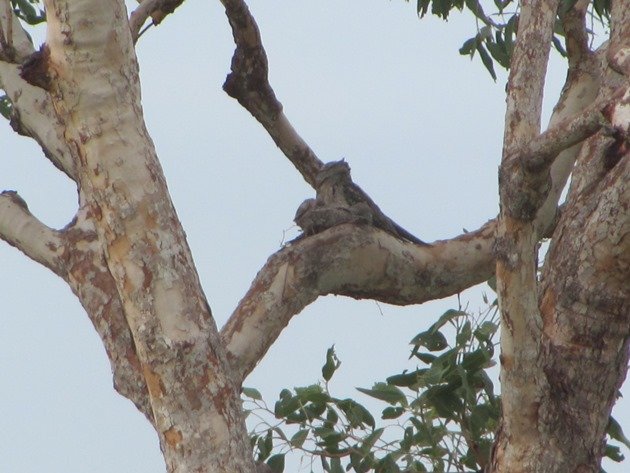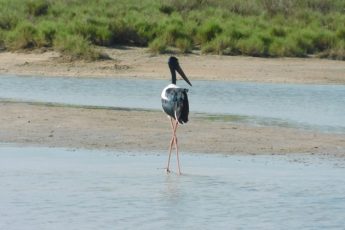Let’s just start this post with the answer someone googling this info will need:
You do not need to take your hummingbird feeder in on Labor Day. It is a myth, an old wives’ tale and completely not true that if you leave your hummingbird feeder outside that you will prevent them from migrating south. I know humans as a whole are a powerful species, but really, we do not have that much control over hummingbird migration (Trumpeter Swans, maybe, but not hummingbirds). Their migration has more to do with daylight length and insect availability than your little nectar feeder.
It is possible to see birds like the above female Ruby-throated Hummingbird well into October in northern states like Minnesota. Every time I think this topic has been done to death…I get the question or I’ll see a post and I realize, some urban legends refuse to die. I saw on a local listserv that a woman just posted, “Well, I saw the last of the hummingbird today.”
How does she know???
Just based on the fact that it’s early September, I that is not going to be the last one she sees…well, it might be. Some people have odd bird blinders, they only see them when the legend or folklore tells them they should see them–like a rain crow before a storm, regardless Yellow-billed Cuckoos are there all the time. This is actually a great time to offer hummingbird nectar, we have more hummingbirds now than any other time of year–all the young have hatched and it takes awhile for birds in northern regions to make it all the way down south. Nectar that is offered now is a bonus on their southward journey.
Some hummingbirds get off course–perhaps a young bird is hatched with an odd internal compass or has hit a window one too many times and heads east or north instead of south with the rest of the gang and you get odd ducks showing up in unexpected areas. There’re even theories that some western hummingbirds species like the Rufous Hummingbird have always had a small wintering population in the eastern US or this is how some birds expand and change their ranges and could we see some hummingbirds shifting east?
Who knows but chances are good in the eastern US that if you have a hummingbird in the area after October, it is unlikely to be a Ruby-throated Hummingbird and something much more exciting. Some of the unusual species we’ve documented here in Minnesota in the fall include Magnificent Hummingbird (above), Costa’s Hummingbird and Green Violetear.
In other hummingbird migration news, the wildfires in southeast Arizona this summer did a number on hummingbird habitat and birds are swarming to feeders. Most of the nectar rich flowers western birds use as a fuel up spot on their way south aregone and birds are crowding at feeders. KAYTEE Wild Bird Products worked with Southeast Arizona Bird Observatory to establish the Arizona Hummingbird Disaster Relief effort supporting the health and welfare of the resident and migrating hummingbirds by shipping $50,000 of product for placement throughout the region. Feeders are being distributed through Farmer’s Markets and birding events from July 29 to September 24, 2011 within the region.








 New writers welcome – please contact us for details.
New writers welcome – please contact us for details.

















I was sitting in the car, waiting for another birder when i saw a cross bill. It was gone before my companion arrived. She argued that it couldn’t have been a cross bill, as we were fifty miles outside it’s range. I argued that while i hadn’t seen a cross bill before, i had plenty of time and a field guide, the bills crossed, and as near as i could tell, it had wings, so fifty miles was a couple hours of flight at most.
Another time, we saw a swallow tailed kite, way out of it’s range. We’d both seen one before, and at length. She said, “it just can’t be”. I argued that gulls don’t have forked tails. The local bird observatory had several independant reports that backed me up.
All we get here are Ruby Throated hummers. I got to see one a week ago. And, one buzzed my garden the week before. Having the right plants is arguably lower maintenence than a feeder. I don’t worry about transmitting infections.
I’m still seeing Ruby-throated hummingbirds in Chicago, where incidentally one of the hot topics on the state bird list (besides “The Big Year” movie) has been a sighting of a Downy Woodpecker muscling in on a hummingbird feeder …
I am in SE MIchigan and just saw a ruby-throated hummer at my feeders. Still around and I am not taking my feeders down yet.
I had 6 hummers buzzing around one of my feeders this morning in north Georgia 🙂
Still seeing hummers in Pennsylvania.
Help,ruby throated hummer not flying south,in my house overnight,I live Ont in canada,it’s too late for himto go south.